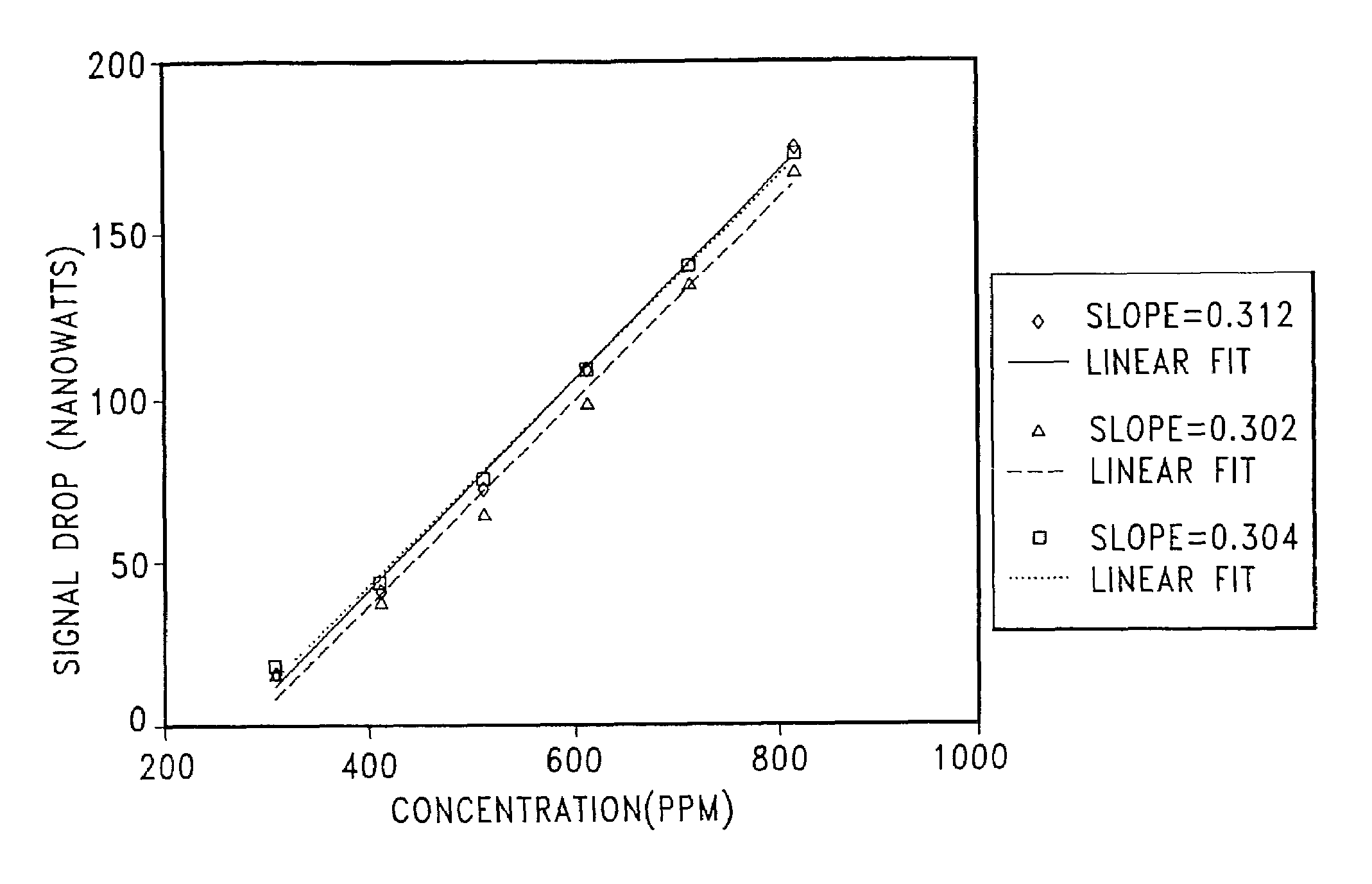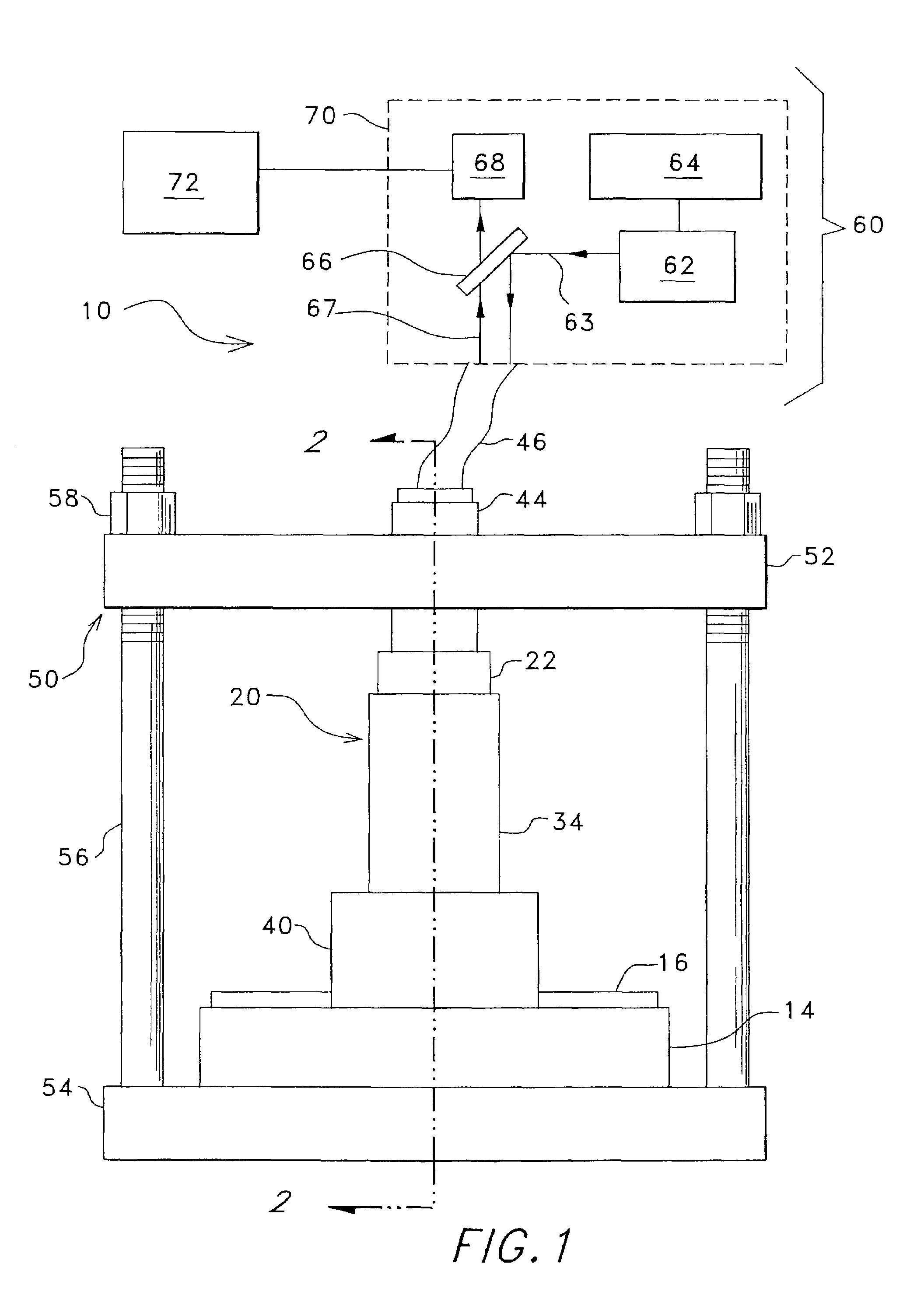Method and apparatus for determining diffusible hydrogen concentrations
a technology of diffusible hydrogen and concentration, which is applied in the direction of calibration apparatus, instruments, specific gravity measurement, etc., can solve the problems of material unsafe or unsatisfactory use, material is considered unsafe or unsatisfactory, and the effect of less time and reliable and accura
- Summary
- Abstract
- Description
- Claims
- Application Information
AI Technical Summary
Benefits of technology
Problems solved by technology
Method used
Image
Examples
Embodiment Construction
[0023]A diffusible hydrogen measuring apparatus 10 for use in measuring diffusible hydrogen concentrations according to the present invention is illustrated in FIG. 1 mounted with a mounting device 50 on a welded object 14 comprising pieces of steel joined with weld bead 16 from a standard arc welding process. Although the present invention is useful for measuring diffusible hydrogen concentration in many structures, such as cannon barrels, pressure vessels, and galvanically protected metal structures, the following description will generally be directed to welded structures, and specifically, welded joints on steel structures, to more fully and clearly describe the inventive features of the present invention. Persons skilled in the art will, upon understanding this description, recognize the applicability of the invention for use on such other structures and will be able to apply this invention for such uses.
[0024]The hydrogen measuring device 10 includes a sensor assembly 20 that ...
PUM
| Property | Measurement | Unit |
|---|---|---|
| wavelength | aaaaa | aaaaa |
| thickness | aaaaa | aaaaa |
| diffusion coefficient | aaaaa | aaaaa |
Abstract
Description
Claims
Application Information
 Login to View More
Login to View More - R&D
- Intellectual Property
- Life Sciences
- Materials
- Tech Scout
- Unparalleled Data Quality
- Higher Quality Content
- 60% Fewer Hallucinations
Browse by: Latest US Patents, China's latest patents, Technical Efficacy Thesaurus, Application Domain, Technology Topic, Popular Technical Reports.
© 2025 PatSnap. All rights reserved.Legal|Privacy policy|Modern Slavery Act Transparency Statement|Sitemap|About US| Contact US: help@patsnap.com



